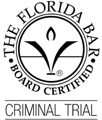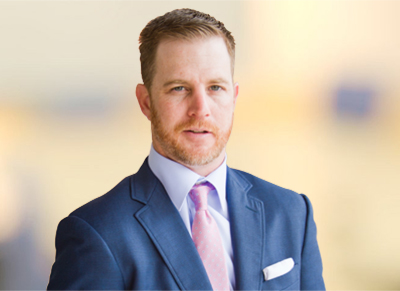Criminal trials and prosecutions that don’t reach trial are fueled by evidence in many forms. Before police can make any legal arrest, they must have sufficient evidence to constitute probable cause. But to convict someone of a criminal offense, the prosecution must have sufficient evidence to prove the defendant is guilty beyond a reasonable doubt.
The gap between probable cause to arrest a person and earning a conviction by guilt beyond a reasonable doubt will either be filled with evidence worthy of being admitted in a court of law or it will not. This article explains the types of evidence that are used in criminal prosecutions and defense cases, and what standards they must meet in order to be considered good enough to present to a jury.
The Rules of Evidence
The rules that determine what evidence is able to be presented in court and what is unworthy of being used in court are virtually uniform across the United States, including the Federal Rules of Evidence and each of the respective states’ Rules of Evidence.
These rules were developed from a combination of centuries-old principles mixed with a newer understanding of science and nature. The key factors in determining whether something can be used in court are whether they are authentic, relevant, and material. Each of these terms are the subject of extensive study and debate among legal scholars, but all lawyers and judges use these concepts every day in every case.
Generally, something is relevant if it tends to make some fact in the case more probable or less probable. We call that its “probative value.” However, it will be irrelevant if its unfair prejudice to the other party outweighs its probative value.
Types of Evidence Used In Criminal Cases
Both the prosecution and defense rely on various types of evidence to construct their case narratives and sway the verdict in their favor. Criminal defense lawyers fighting against their client’s criminal charges must have a deep understanding of the diverse forms of evidence that will influence the outcome of their case.
At Stechschulte Nell, Attorneys at Law, we pride ourselves on our extensive knowledge of the law, the rules of evidence, the rules of criminal procedure, and the art of courtroom advocacy. After many years of in-court practice defending every imaginable criminal allegation, our criminal defense lawyers are skilled in the use of evidence and in the opposition to the prosecution’s use of illegal or unreliable evidence.
The following are some of the types of evidence we deal with every day:
Physical or “Real” Evidence
Physical evidence refers to tangible objects or material items connected to the crime scene or the defendant. For example, physical evidence in a criminal case could include a weapon, whether it is a gun, a knife, or another object used to commit the offense.
Physical evidence also includes what is referred to as “forensic evidence,” fingerprints, DNA samples, hair strands, or blood traces.
Stolen property or items recovered that link someone to a theft or robbery are other forms of physical evidence.
Physical evidence needs to be identified by an appropriately qualified witness before it can be admitted into evidence. Only after the court is satisfied that the evidence is genuinely useful to prove or disprove an important fact in the case will it be admitted into evidence.
Documentary Evidence
Documentary evidence can be any written or printed material that is relevant to the case.
This includes letters, emails, business records, handwritten notes, receipts, and any other similar communication that might provide relevant information about a fact in the case. Similarly, contracts, written agreements, and photos or videos are common types of documentary evidence.
Before any documentary evidence is permitted to be presented in court, the party proposing to use it needs to produce evidence that the documents are authentic. Usually, an original document is favored over a copy unless there is evidence explaining why the original is not available and attesting to the reliability of the copy.
Witness Testimony
Testimonial evidence is given by a competent witness under oath. This is the spoken evidence presented by both the prosecution and defense witnesses.
The testimony allowed by a witness depends on the type of witness it is. Eyewitness or witnesses that observed a relevant fact are the most common. But an expert witness can testify to a fact they did not see but about which they have studied or gained great knowledge and experience. Character witnesses can even testify about a person’s good or bad character under very limited circumstances. Accounts from individuals who saw the crime occur or can vouch for the defendant’s whereabouts.
The reliability of testimonies can vary, making cross-examination a crucial tool for defense attorneys.
Demonstrative Evidence
Demonstrative evidence is a visual representation of the events, aiming to clarify or illustrate something that was put into evidence through someone’s witness testimony.
Charts and graphs are often used to make a complicated scene or set of numbers more easily understood by the jury or the judge. In some cases, as in a civil auto accident case, reconstructions of events may be allowed by the judge if they depict the facts well enough and are not misleading.
This type of evidence is usually only used to help the fact finder get a clearer view of some fact or event.
Digital Evidence
Digital evidence has become increasingly significant in virtually every criminal and civil case.
People use electronic communications of all sorts every day and in virtually all situations. As a result, text messages, emails, and social media interactions often contain very powerful information that is valuable evidence. Someone might admit to conduct that is at the center of the case, or another person might be able to prove that they were not making up a recent story about an event by showing that they texted the story within minutes of observing the events.
Digital photography and video is also commonly used in courts. However, as technology has made it easier to manipulate, alter, or even falsify an entire image by using tools like AI, the law will need to adapt and apply extremely close scrutiny over this type of evidence before it is allowed to be admitted in court.
Computer records of someone’s browsing history, file downloads, or transaction records are another similar example of new technology that needs to be tested for authenticity before they can be used.
The admissibility of digital evidence often hinges on proper collection and preservation techniques to ensure it hasn’t been tampered with.
Hearsay Evidence
Hearsay is a phrase that’s very familiar to people through TV crime shows and movies. But few non-trial lawyers know exactly what it.
Hearsay is a statement or declaration made outside of court that is being offered as evidence in court “to prove the matter asserted within it.” For example, if someone on the street said, “It’s hot outside,” and a lawyer tried to prove it was hot out by citing that person’s sidewalk declaration, that would be inadmissible hearsay.
But if the lawyer offered the same statement not to prove it was hot, but to prove that the person was present on the street at a given time, then the statement could be admitted.
While hearsay is usually inadmissible because of its potential unreliability, there are many exceptions and nuances in the law. Some common exceptions include:
Spontaneous Declarations: Statements made in the heat of the moment, and not provided to police in response to an investigation question after the events.
Business Records: Routine records kept in the ordinary course of business.
Former Sworn Testimony: Statements given under oath in prior proceedings, in some circumstances.
Criminal Defense Lawyers Should Be Masters of Evidence
The work of a criminal defense lawyer requires an encyclopedic knowledge of the rules of evidence. Not only must the lawyer know the rules, but they must also be exceptionally skilled at using the rules to gain a tactical advantage over the prosecution.
Unless your criminal defense lawyer is extremely talented using the rules of evidence, they may unknowingly allow a prosecutor to use inadmissible evidence against you that a more knowledgeable lawyer would have objected to. Call us at 813-280-1244 and safeguard your defense with masters of evidence.









